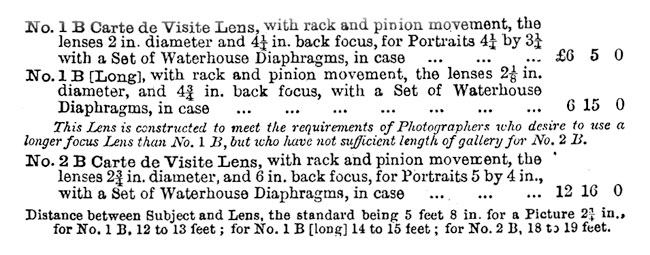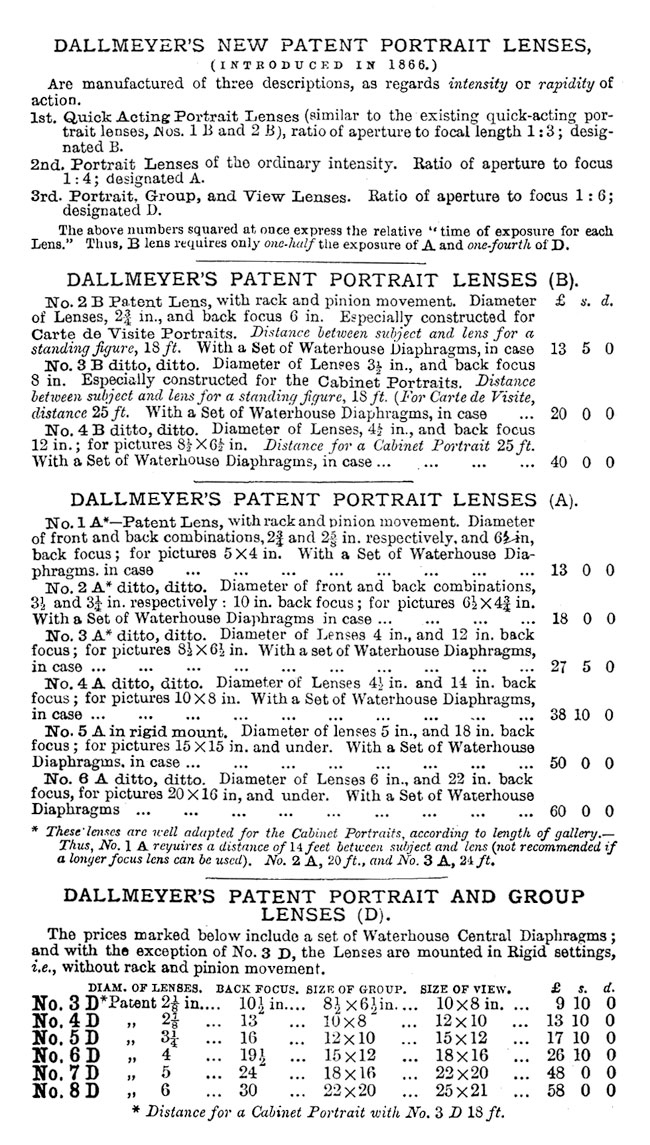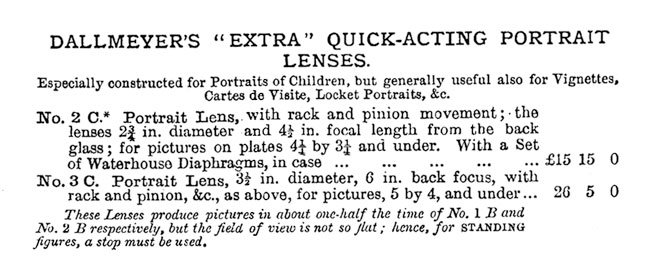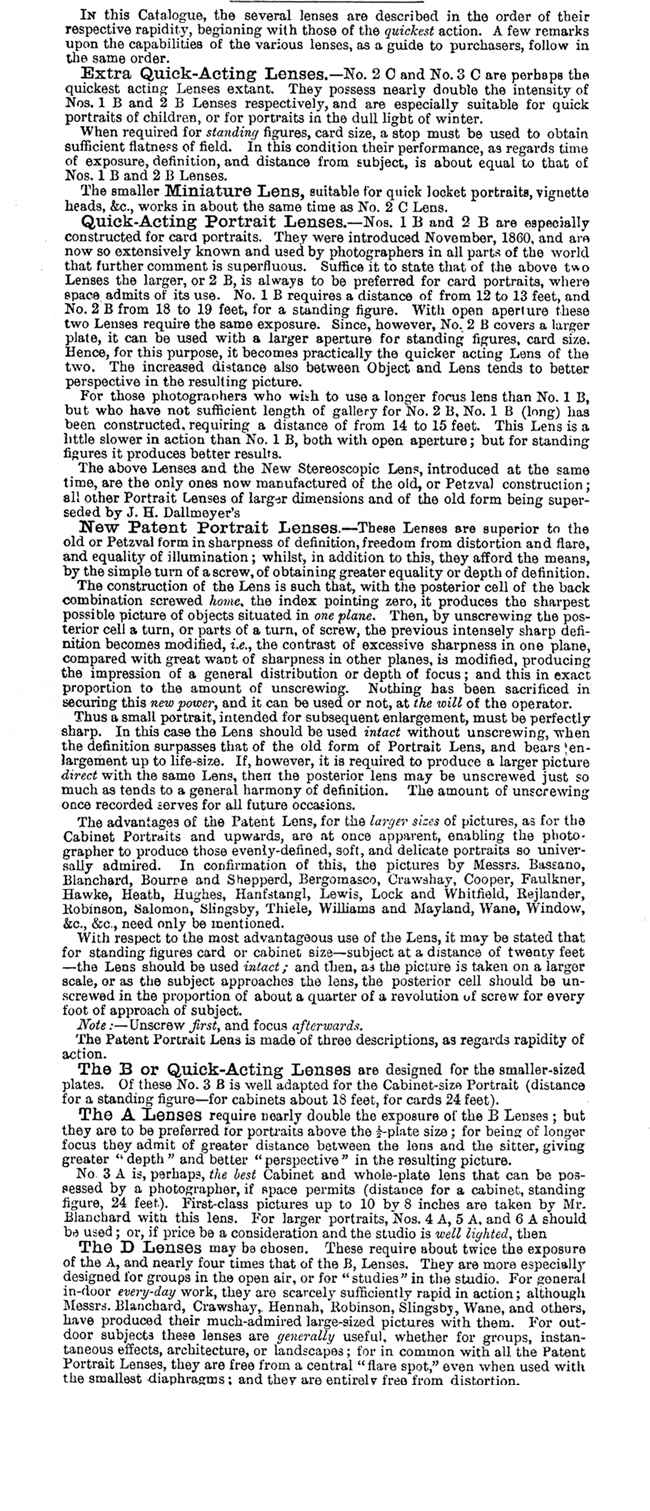Portrait Settings
The portrait lens that may prove most difficult to identify is Dallmeyer's improved Petzval, introduced in 1860 and sold throughout the nineteenth century.

The lens above is an example, a 2B Quick Acting Portrait lens with rack and pinion focus. Quick Acting Portrait lenses were made in several different sizes, and they are only inscribed with the name J.H.Dallmeyer, the serial number and London, as illustrated by this example, below, left.

Inscription on the Quick Acting Portrait lens . Inscription on a comparable Patent Portrait lens
They are best identified by referring to the list below, where the lens diameter is recorded as well as the back focus,* These dimensions should indicate whether the lens is a 1B, 1B long or a 2B.

From 1860 to 1865, 3B and 4B versions of the Quick Acting Portrait lens series were also available but were then replaced in 1866 by the Patent Portrait series. These lenses would be of comparable size to the equivalent 3B and 4B Patent Portraits lenses. The list below provides the data that should enable anyone fortunate enough to own one of these very rare and short lived lenses to identify it.
All the Patent Portrait lenses are easy to identify as they are additionally marked Patent with the size and type i.e., 2B, 4A or 3D, as can be seen in the example above, right.
Full details of the Patent Portrait series are given below:

Other lens types were also offered in the early years of Dallmeyer production. One such series are the Group settings. These appear to have been directly replaced by the Patent Portrait D series as this page from Stock Book Volume 2 shows.
The Extra Rapid Portrait lenses, 2C and 3C are also marked as such.


* The distance between the rear element of the lens and the image, when the lens is focussed at infinity.
Return to Lens Recognition